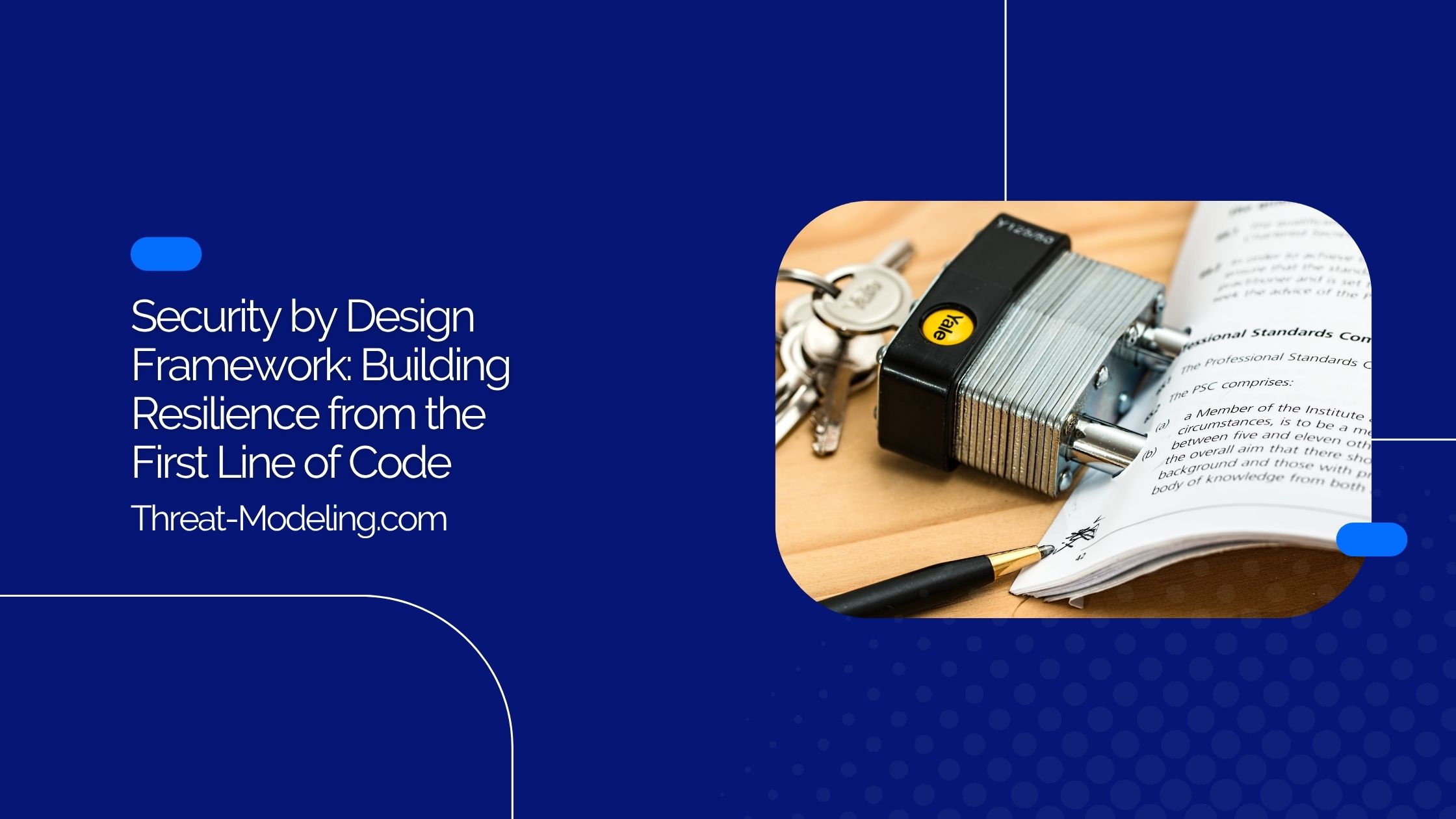Why “Security Later” Is a Dangerous Myth
Every developer has faced the temptation: push the feature live today, patch the risks tomorrow. Yet the headlines keep reminding us that tomorrow often arrives in the form of a data breach, a regulatory fine, or a battered reputation. The Security by Design Framework exists precisely to shut the door on that gamble. By weaving security considerations into the earliest architectural sketches and maintaining them throughout the software life cycle, organizations move from reactive firefighting to proactive risk reduction. That pivot is more than a best practice, it is rapidly becoming a legal and competitive necessity.
The DNA of a Security-First Culture
A successful Security by Design Framework is rooted in culture before code. Picture two engineering teams operating under identical budgets and timelines. One sprinkles security reviews at the end of each sprint and calls it a day. The other bakes threat modeling into backlog grooming, pairs developers with security champions on every user story, and frames vulnerability reports as learning opportunities rather than blame assignments. Guess which team spends fewer nights on emergency calls? By normalizing secure coding conversations and celebrating secure releases as key performance indicators, leadership aligns business incentives with cyber-resilience. Employees start to ask, “How might this feature be abused?” as naturally as they ask, “Does this meet user needs?”
Threat Modeling: The Unsung Hero
Threat modeling sits at the heart of any robust Security by Design Framework. Think of it as the architectural walkthrough for your system’s future attackers. When teams identify assets, map data flows, and brainstorm abuse cases early, they gain clarity on the most cost-effective countermeasures. This clarity prevents the dreaded scenario where developers retrofit encryption or input validation after core libraries are locked. Instead, those protections become first-class citizens of the design, reducing both technical debt and executive anxiety.
Secure Coding Standards in Plain English
Talk to any software engineer, and you will discover that “secure coding guidelines” often live as dusty PDF manuals, rarely opened after orientation day. A living Security by Design Framework avoids that fate by translating cryptic mandates into everyday language and just-in-time reminders. Instead of burying best practices in endless documentation, the framework surfaces context-aware tips directly inside code editors, pull-request templates, and automated build checks. The outcome? A workforce that can recall safe serialization methods or cross-site scripting mitigations without flipping through a manual.
Automated Checks: Trust but Verify
Automation is the muscle that keeps good intentions from eroding under deadline pressure. Static analysis tools flag dangerous functions before code merges. Dynamic scanners inspect running applications for misconfigured authentication flows. Dependency checkers alert teams to third-party libraries that suddenly sprout zero-day vulnerabilities. Within a vibrant Security by Design Framework, these tools play a coordination game rather than a blame game. Alerts are prioritized against real business impact, false positives are tuned out, and developers receive digestible remediation steps instead of cryptic logs.
Continuous Integration, Continuous Security
Many organizations have mastered CI/CD pipelines for rapid feature deployment. The next logical evolution is CI/CS, continuous integration, continuous security. Each build becomes not just a test of functionality but a mini-penetration test on autopilot. This approach shortens the distance between vulnerability discovery and resolution to mere minutes instead of weeks. More importantly, it encourages developers to see security feedback as just another build metric, no different from performance or reliability scores.
Human Factors: Because People Still Click Links
Technology alone cannot salvage a system from human error. A well-rounded Security by Design Framework, therefore, incorporates user-experience design to steer customers and employees toward safer behavior. Simple copy changes, clearer permission prompts, or thoughtfully spaced two-factor authentication nudges can slash the success rate of phishing campaigns. When security measures feel intuitive rather than obstructive, users stop looking for shortcuts, and attackers lose easy entry points.
Regulatory Harmony and Competitive Edge
Regulators worldwide are tightening the screws on data protection and software liability. Rather than viewing new laws as hurdles, forward-thinking companies treat compliance standards as minimum baselines within their Security by Design Framework. By exceeding those baselines, they create a trust moat that rivals struggle to cross. Consumers and enterprise buyers alike gravitate toward vendors who can prove they do more than just checkbox security. In an era where privacy policies are dissected on social media within hours of any incident, demonstrable commitment to a security-first approach becomes a core marketing asset.
Case Story: From Patch Chaos to Predictable Calm
Consider a mid-size fintech startup that handled microloans in emerging markets. For years, its engineering team ran on adrenaline, pushing weekly fixes to plug vulnerabilities spotted in production. Customer trust wavered, and regulators initiated costly audits. When revenue took a nosedive, leadership embraced a Security by Design Framework as a last resort. They began with a week-long threat-modeling workshop, rewrote deployment scripts to include automated secret scanning, and assigned seasoned developers as security champions for each module. Within six months, reported vulnerabilities fell by 70 percent. Support tickets about suspicious transactions dropped, compliance audits concluded faster, and the company’s brand recovered. The transformation cost far less than the cumulative emergency budgets of years prior, revealing a crucial lesson: investing in proactive security can be the most economical line item on the ledger.
Metrics That Matter
Measuring the success of a Security by Design Framework requires moving beyond vanity counts of closed tickets. Instead, organizations track mean time to remediation, the percentage of code covered by automated checks, and the ratio of vulnerabilities caught in development versus those discovered post-release. When those numbers trend in the right direction, leadership gains tangible evidence that cultural shifts are paying off. Just as importantly, developers receive real-time confirmation that their secure coding habits translate into measurable business impact.
The Role of DevSecOps
DevSecOps is often described as the tactical arm of a Security by Design Framework. By embedding security specialists into agile squads, it ensures that no pull request, environment variable, or cloud configuration slips through this protective net. The key is symbiosis: security experts learn to speak the languages of software velocity and user delight, while developers absorb the vocabulary of risk assessment and threat vectors. Over time, that vocabulary gap closes, and the old stereotypes, security as the department of “no” fade into history. Instead, teams rally around a shared mission: ship fast, ship safe.
The Economic Argument in Plain Numbers
Gartner research consistently shows that fixing a vulnerability in production can cost up to 100 times more than addressing it during design. Spread that multiplier across dozens of annual releases, and the financial logic behind the Security by Design Framework becomes inescapable. Moreover, incident response episodes rarely affect just engineering budgets. Marketing teams scramble to rebuild trust, legal teams negotiate settlements, and executives lose strategic focus while navigating crisis mode. A single breach can slow product roadmaps for quarters, if not years. By contrast, a modest annual investment in secure libraries, automated testing, and specialized training offers compounding returns in stability and brand equity.
From Checklists to Continuous Learning
A common misconception is that adopting a Security by Design Framework means amassing a binder full of checklists. In reality, the most resilient organizations treat the framework as a living organism. They conduct blameless post-mortems after every penetration test, refine guardrails when cloud infrastructure evolves, and update training curricula as new languages or frameworks enter the stack. This feedback loop keeps the program dynamic, relevant, and immune to the “paper tiger” syndrome that plagues static policies.
The Intersection of AI and Security by Design
Artificial intelligence promises both new efficiencies and new attack surfaces. Code-generation tools can accelerate development, but they can also inadvertently inject insecure patterns. A mature Security by Design Framework accounts for this duality. It establishes guardrails such as automated policy checks on AI-generated code, mandatory peer reviews, and risk simulations that stress-test machine learning pipelines. Companies that navigate this balance will harness AI’s potential without exposing themselves to headline-grabbing failures.
Supply Chain Vigilance
Modern applications rely on a tapestry of open-source libraries and third-party services. Compromised dependencies can bypass the most rigorous in-house safeguards. Therefore, the Security by Design Framework extends its reach beyond internal repositories to the entire software bill of materials. Continuous monitoring platforms, signed package verification, and vendor security questionnaires become standard practice. By treating supply chain security as a first-class concern instead of a footnote, organizations safeguard themselves against the ripple effects of upstream breaches.
Incident Response: Still Essential, But Different
Even the best safeguards cannot guarantee absolute immunity. However, a healthy Security by Design Framework dramatically shifts the posture of incident response. When breaches are detected, detailed architecture diagrams, threat models, and audit logs are already available, cutting investigation time. Pre-defined playbooks guide communication channels, legal notifications, and patch deployment. The business moves from scrambling in the dark to executing a rehearsed plan, preserving customer trust in the process.
Training That Sticks
Traditional security training often feels like a mandatory slide deck, quickly forgotten after a short quiz. Progressive organizations elevate training into an interactive experience. Capture-the-flag competitions, red-team simulations, and hands-on labs ignite curiosity while embedding lessons in muscle memory. In this context, the Security by Design Framework acts as a curriculum backbone, ensuring lessons align with real production environments rather than abstract hypotheticals.
How to Start Without Upending the Roadmap
Adopting a Security by Design Framework does not demand a big-bang overhaul. Many companies begin with pilot projects, selecting a manageable service or new feature release. They establish baseline metrics, introduce threat modeling workshops, and integrate a handful of automated checks. Early wins feed advocacy, and skeptical stakeholders see the numbers improve. Momentum builds. Over several quarters, the framework scales to encompass legacy systems, mobile applications, and cloud workloads. The incremental path buffers teams from cultural shock and preserves delivery schedules.
The Competitive Future Belongs to Secure Products
Markets increasingly treat robust security as a sign of overall product quality. Investors look for risk-mitigation strategies before allocating capital. Enterprise customers demand proof of rigorous development practices in vendor assessments. Consumers, armed with social media megaphones, punish brands that fail to protect their data. Implementing a Security by Design Framework places an organization ahead of that curve, transforming compliance into differentiation and resilience into revenue.
Final Thoughts: A Mindset, Not a Module
At its core, the Security by Design Framework is less about specific tools and more about a collective shift in mindset. When every project charter, sprint planning session, and code review treats security as a non-negotiable feature, the benefits permeate all levels of the organization. Delivery timelines become more predictable, customer loyalty deepens, and regulatory audits evolve from minefields into routine check-ins. In short, embedding security from the first line of code isn’t just good hygiene, it’s smart business.


